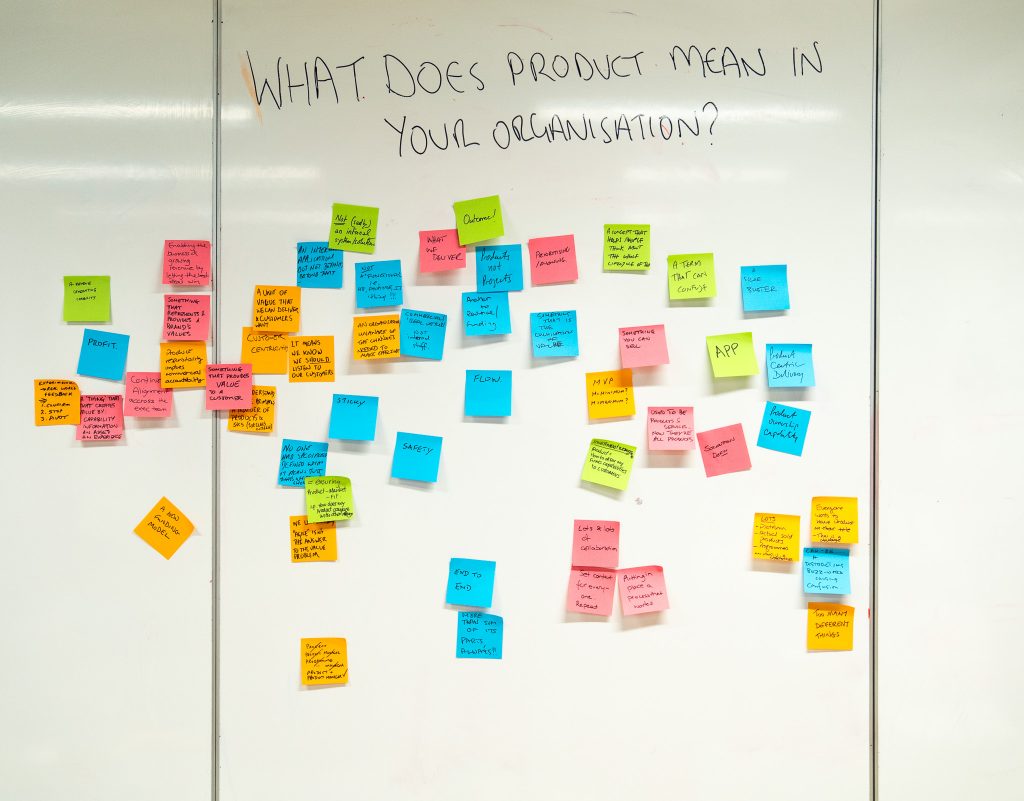Last week, we brought together senior executives from the realms of information, digital, and technology in the first of a series of events for our TIDE Community (Tech, Information, Digital Executives).
The agenda? A deep dive into the essence of ‘product’ in various organisations. The perspectives shared painted an enlightening picture of the CPTO debate – are product and technology best when joined up or separate? Here’s 7 things I learned from the attendees that included tech and product leaders from a diverse range of sectors.
1. Value creation over speed
The emphasis on value creation underscored the discussions. It’s no longer about just delivering something quickly; it’s about ensuring that what’s delivered aligns with the end customer’s needs and brings tangible value. As the product industry has evolved, it has veered away from a singular focus on delivering features and shifted towards creating genuine value—including things like speed, accessibility, or usability.

2. Customer-centricity vs. Commercial viability
Many companies often make the mistake of thinking, “build it, and they will come.” They wrongly assume that if they believe in a product or idea, their customers will automatically resonate with it. Real tension arises in balancing customer focus with commercial viability. A product’s success hinges on its ability to address this balance.
3. Agile isn’t the only answer
One of our attendees discussed being an early adopter of Agile, highlighting that understanding product management was pivotal in comprehending the WHY behind Agile. However, products can be delivered successfully using other methodologies, like Waterfall. The essence lies in understanding the problem at hand and then adopting the methodology that best addresses it.
4. The language and lifespan of ‘Product’
The term ‘product’ has evolved and is now sometimes viewed as a buzzword. With its evolution, there’s been confusion, leading to misconceptions and rabbit holes. The term’s adoption often depends on the semantics and context, but one thing is clear: a product team is cross-functional, involving a blend of skills, making it a powerful tool to break down silos within organisations.

5. Product vs. Technology debate
Some believe a generational debate is ongoing between technology and product. While great product leadership is crucial, especially for younger teams, the importance of understanding the blend of technology within product cannot be discounted. Technology is a part of the process, but it is not the entire mechanism. As the roles of CTOs evolve, there is a realisation that they aren’t just delivery resources but need to play a more significant role in the ideation, implementation, and management of products.
6. MVP, business alignment and knowing your purpose
Aligning product strategy with business objectives is paramount. Product shouldn’t be another ‘tech’ thing, but rather an integral, cross-functional entity. The term MVP (Minimum Viable Product) often gets thrown around, but what does it genuinely signify? A competent product owner understands the market impact and the fit of their product. This understanding roots back to companies properly understanding their true purpose.

7. Enablers of Product
For those in pure-play product roles, aligning with a resident techie is essential to navigate operational challenges like governance and security, for example. Both roles bring distinct value, but they are equally critical for product success.
In conclusion, understanding ‘product’ is pivotal in today’s fast-evolving tech world. Its essence lies in delivering value, keeping customers at the heart of every decision, and ensuring a blend of technology and product mindsets. As companies dive deeper into the world of product, introspection into their purpose and alignment with broader business objectives will be the keys to success.





































































